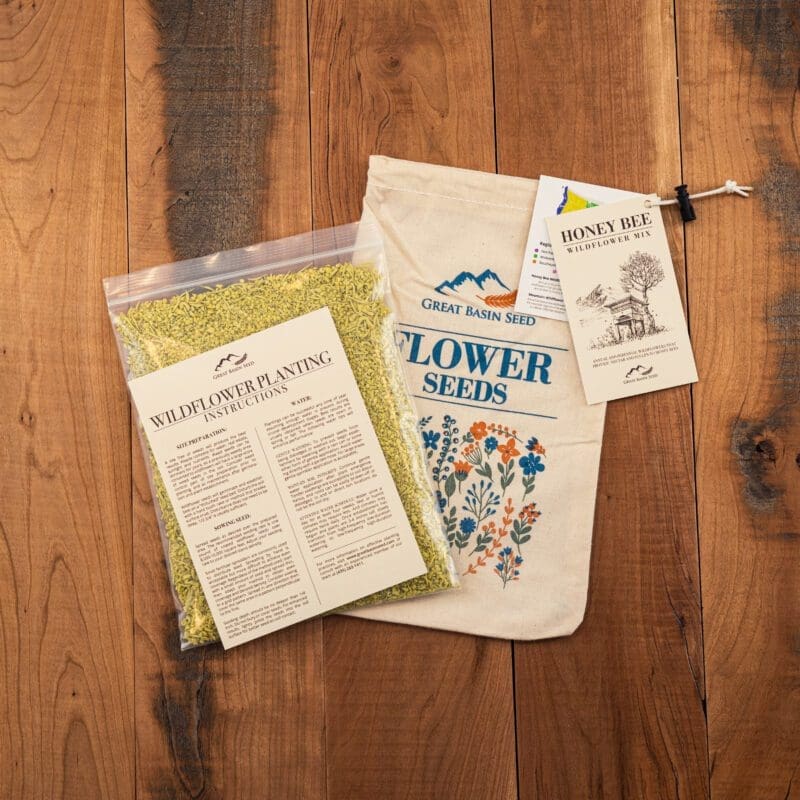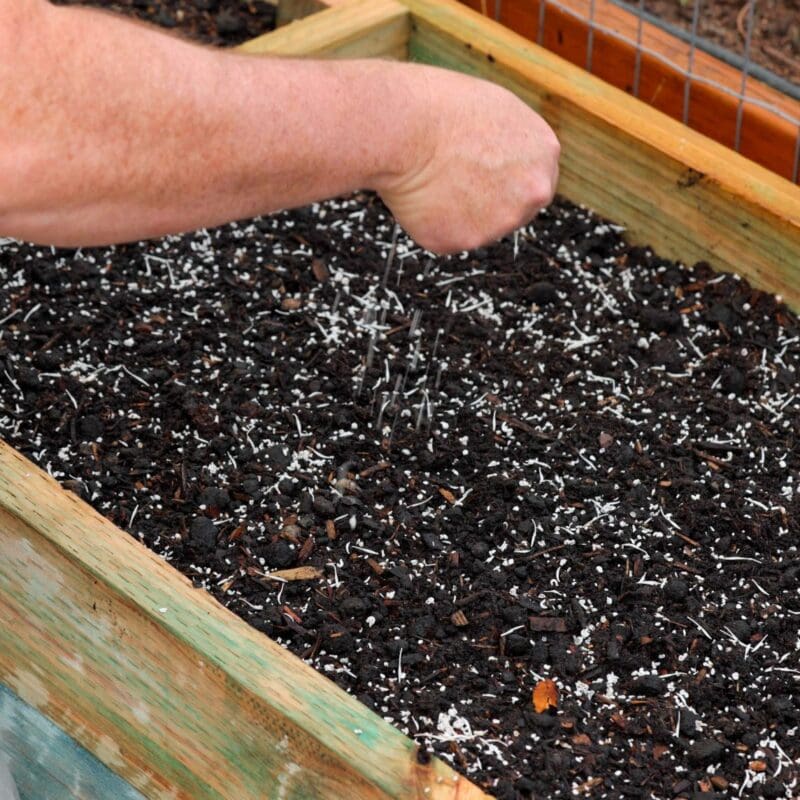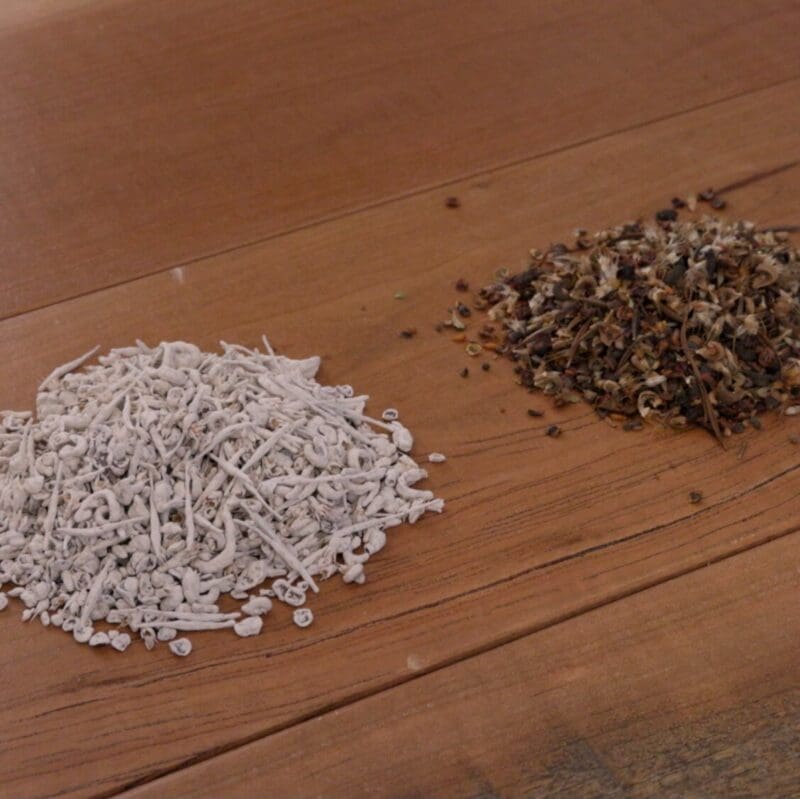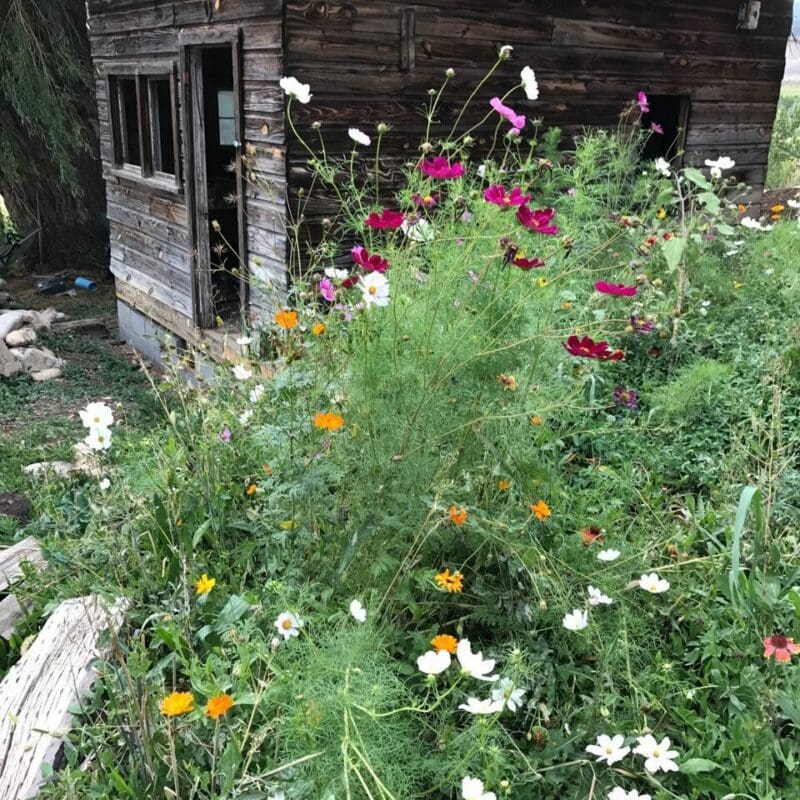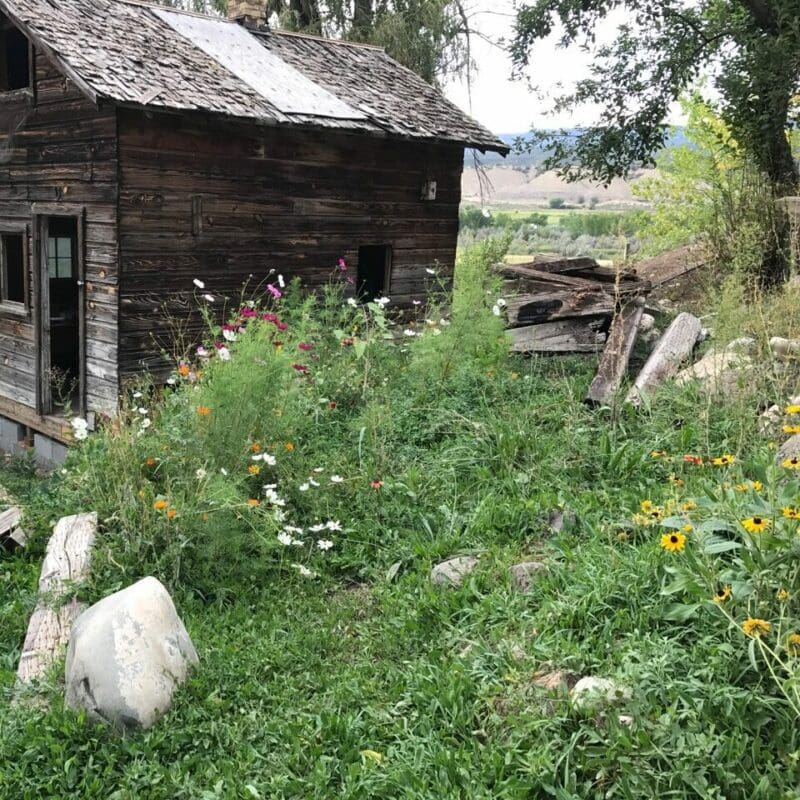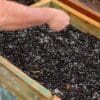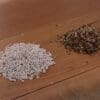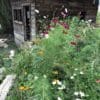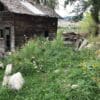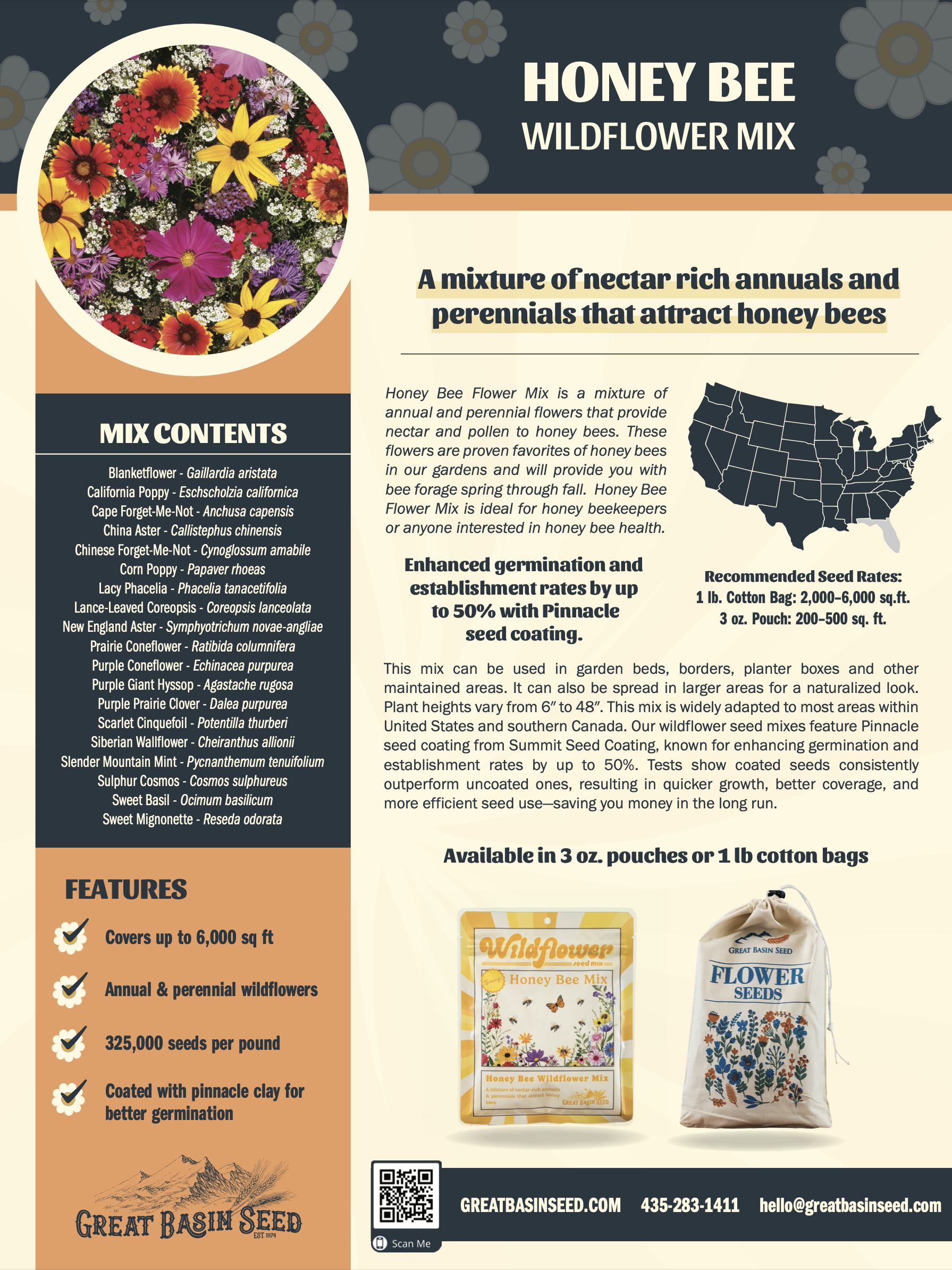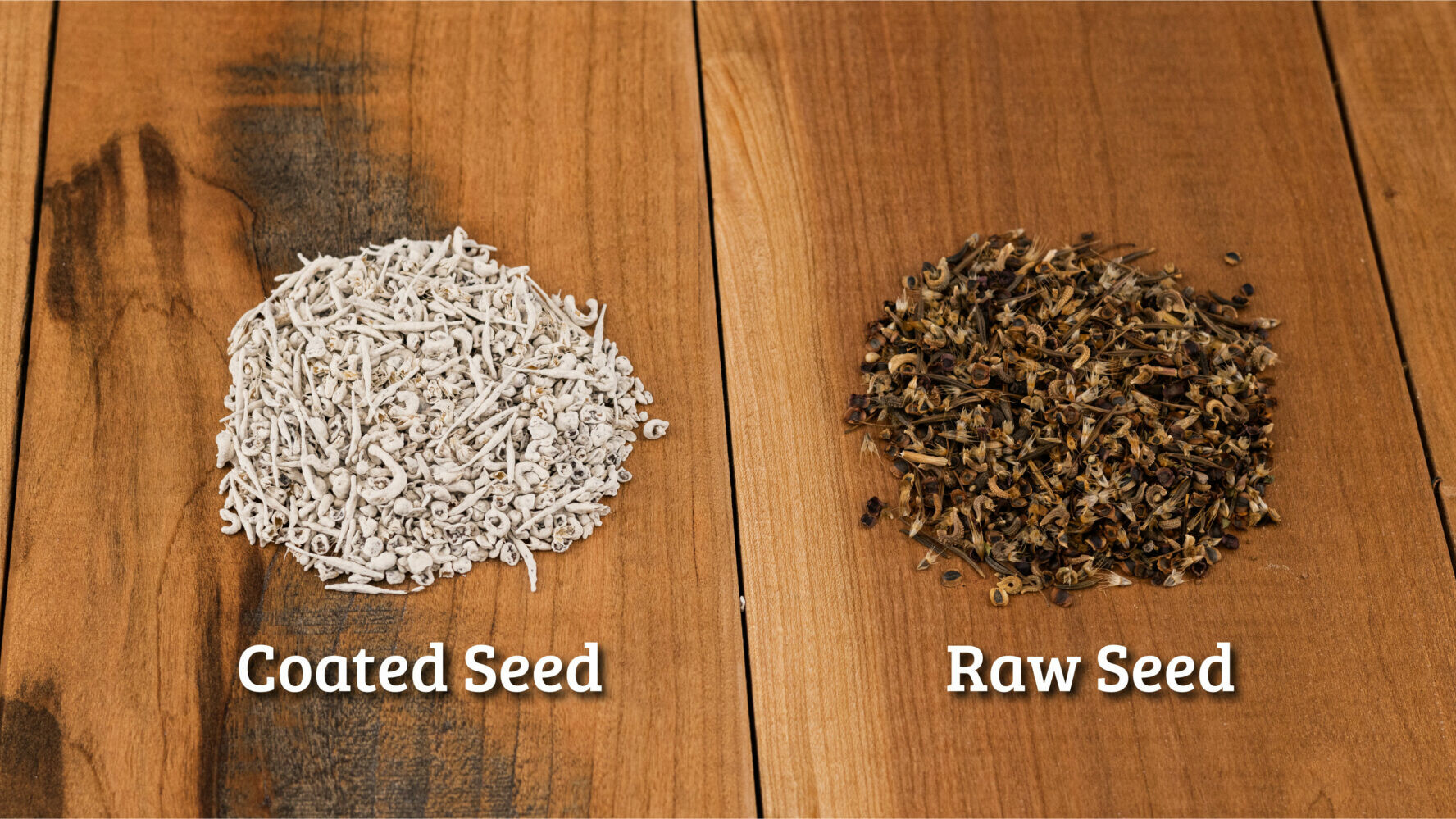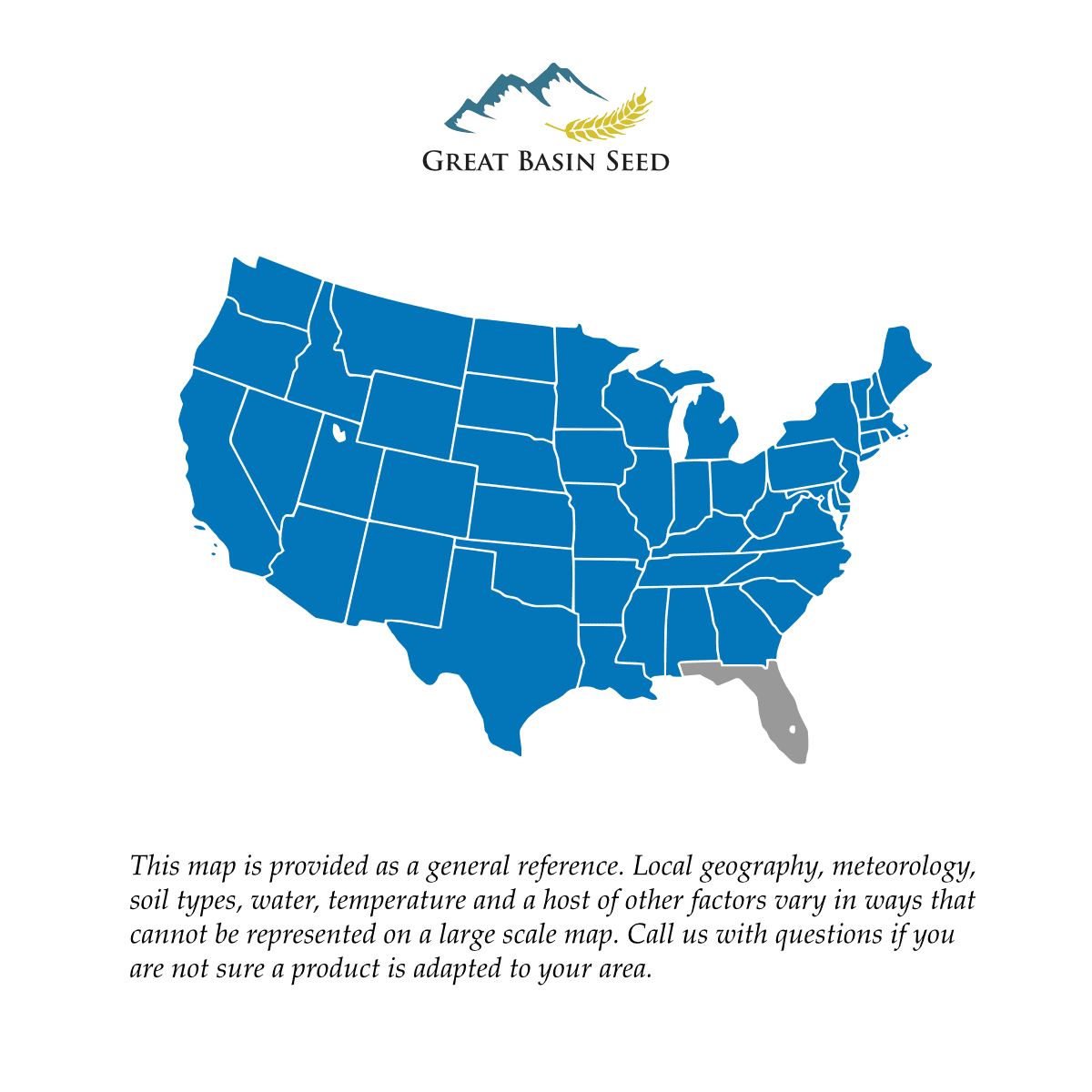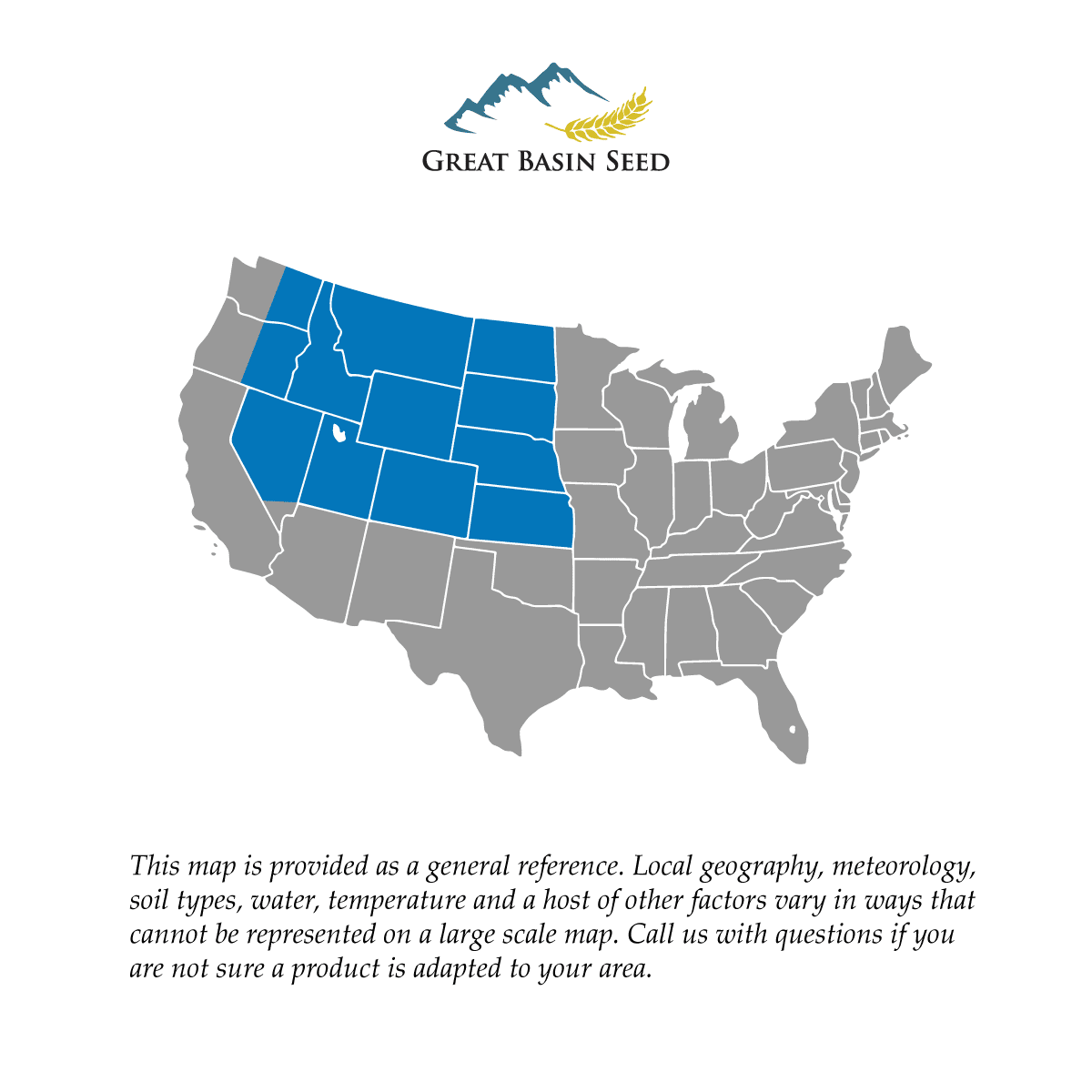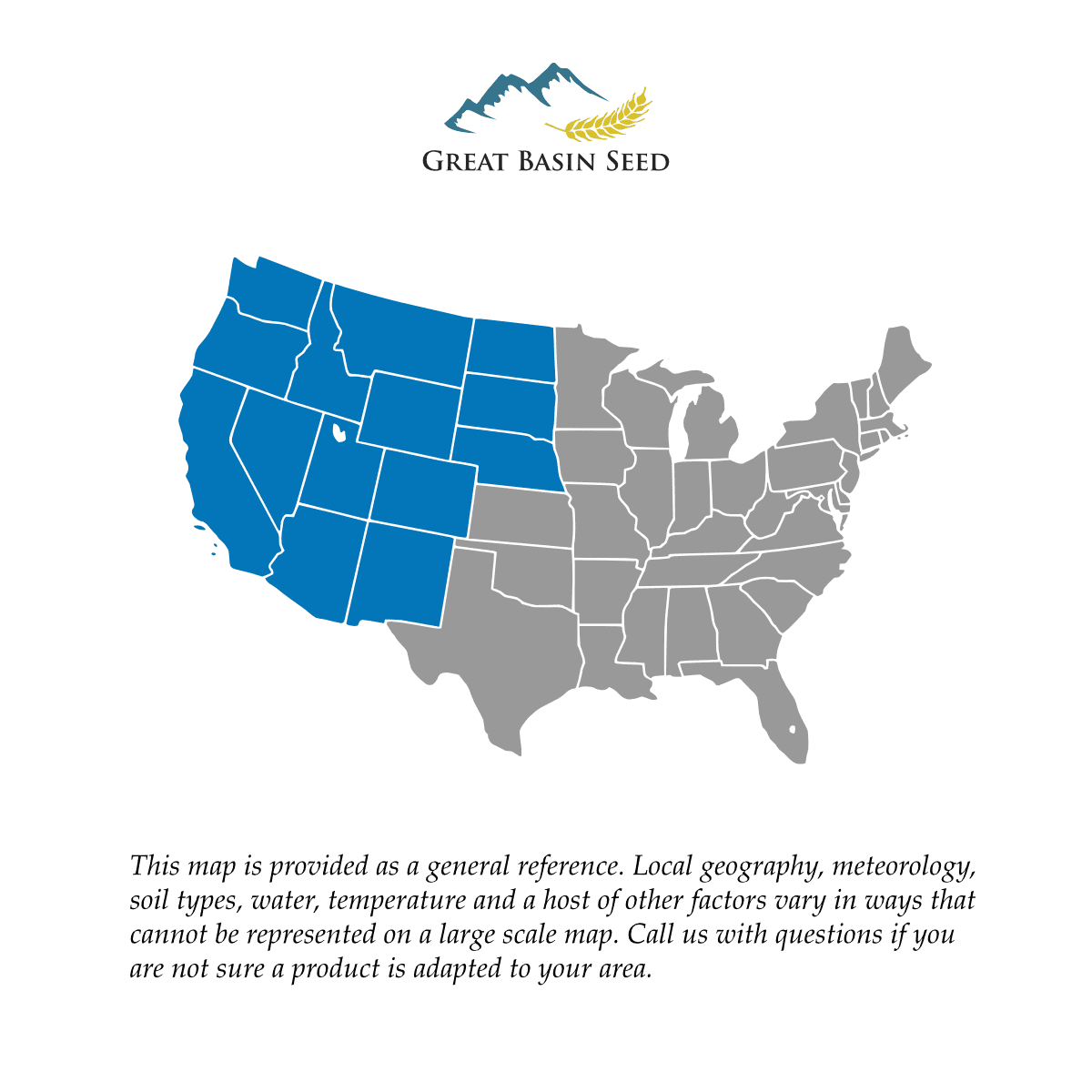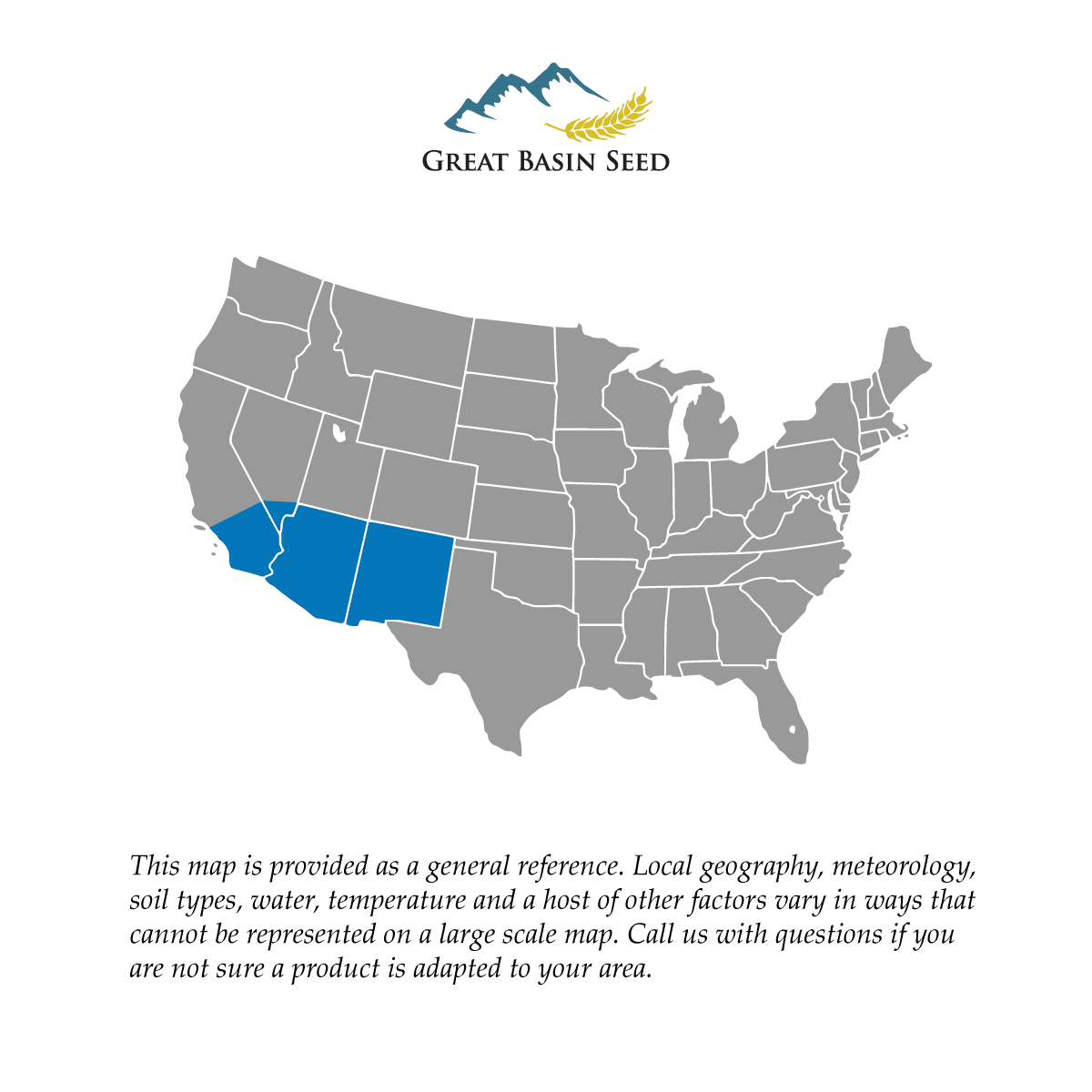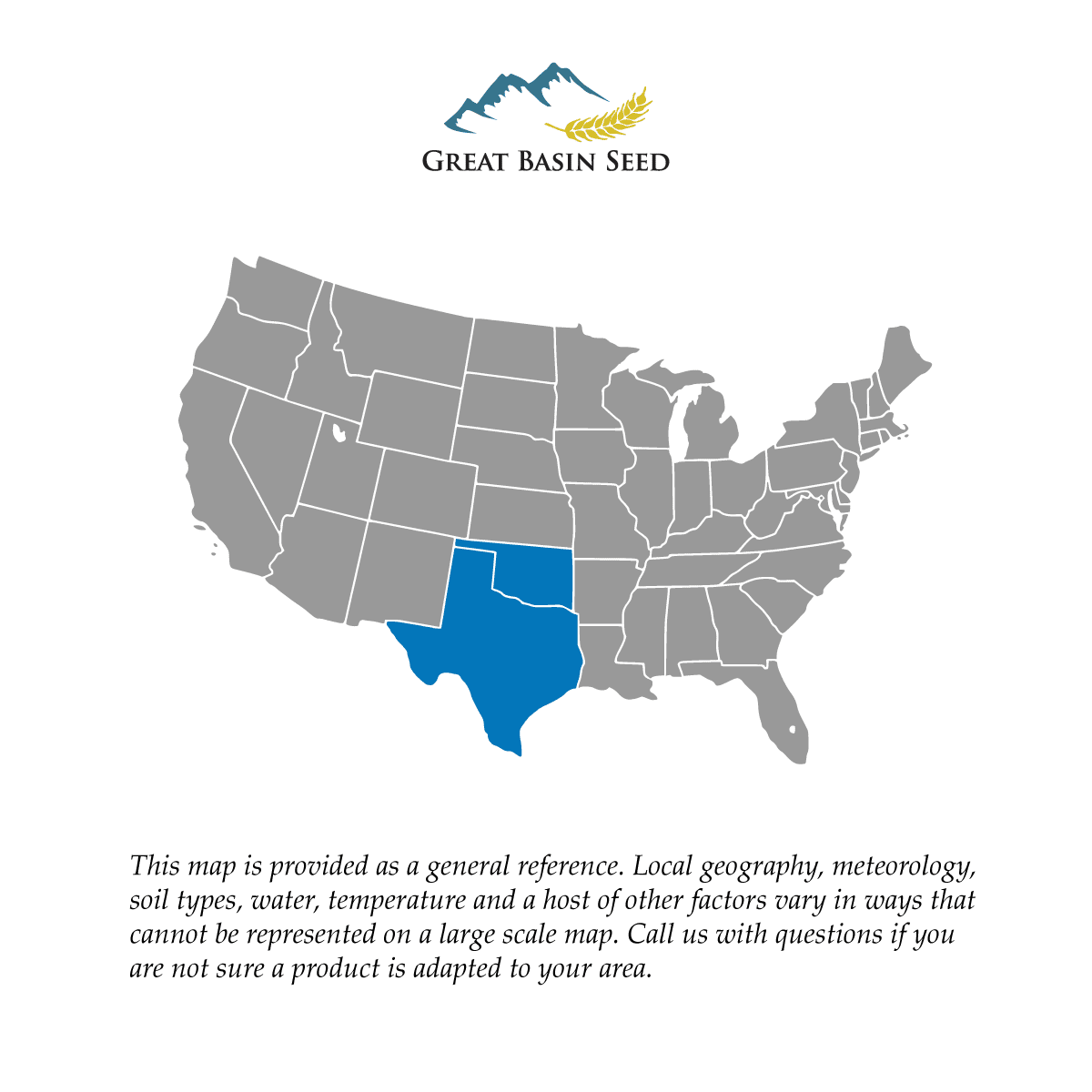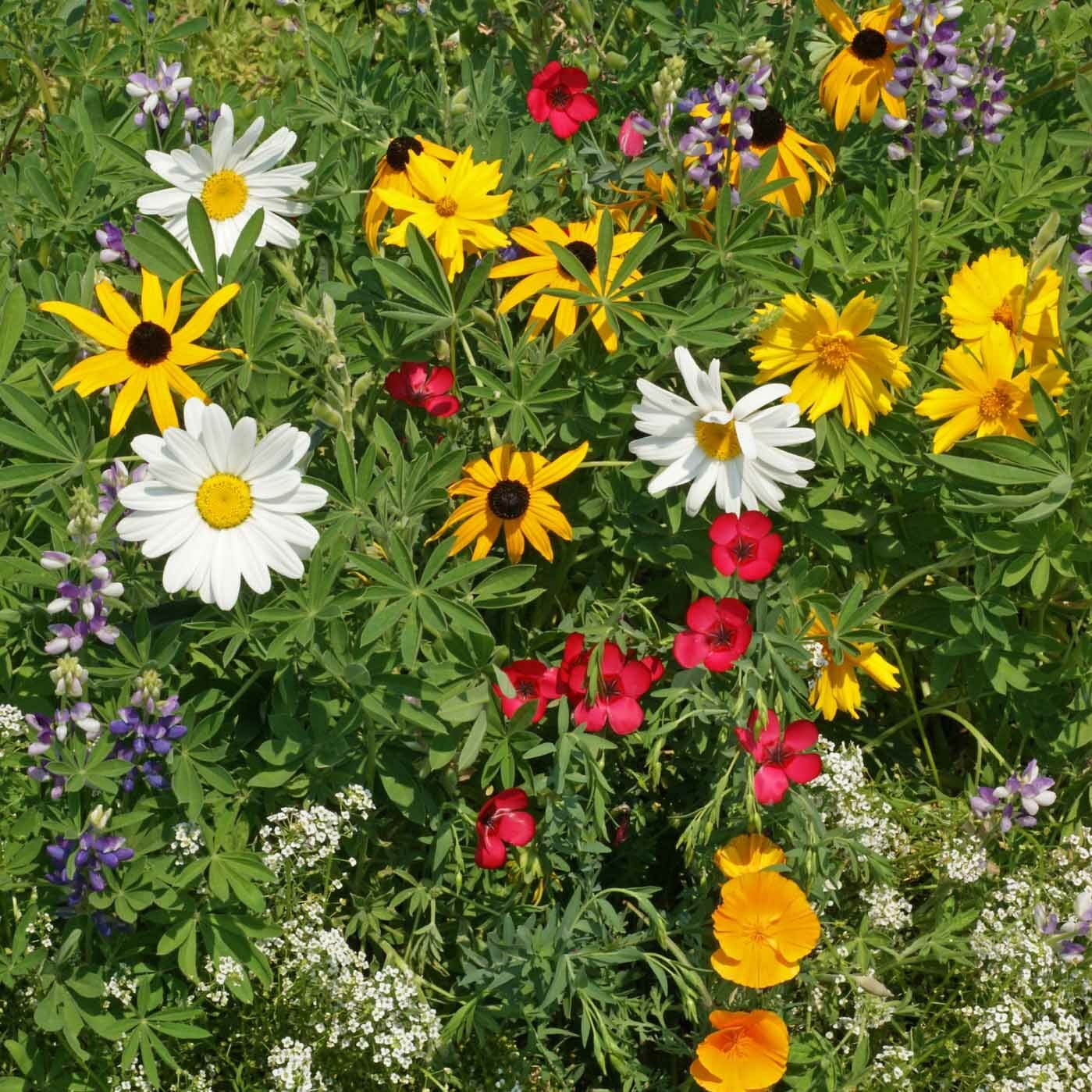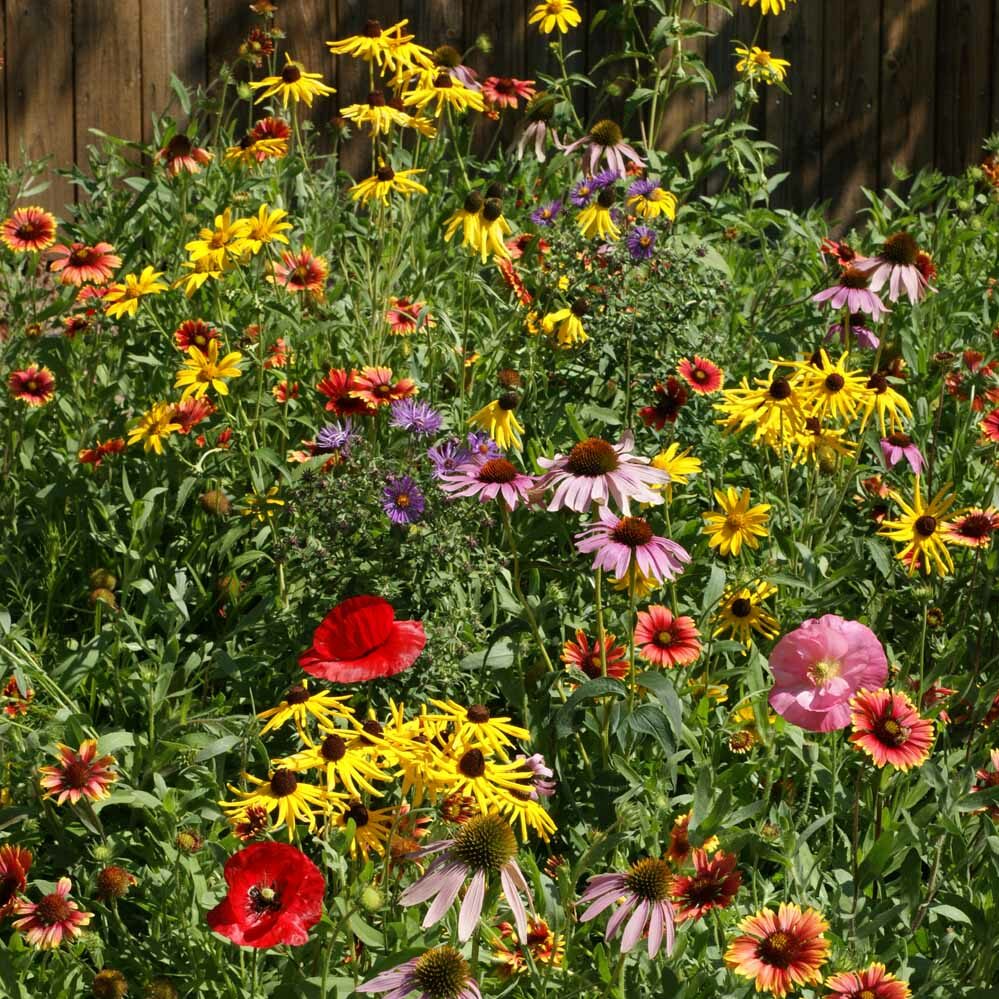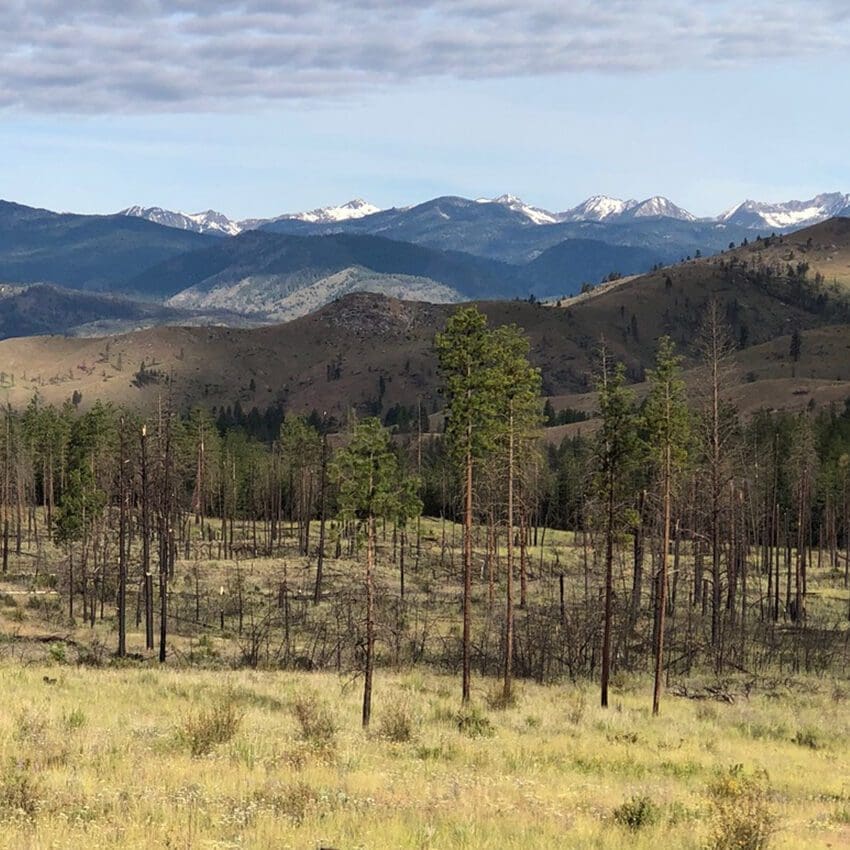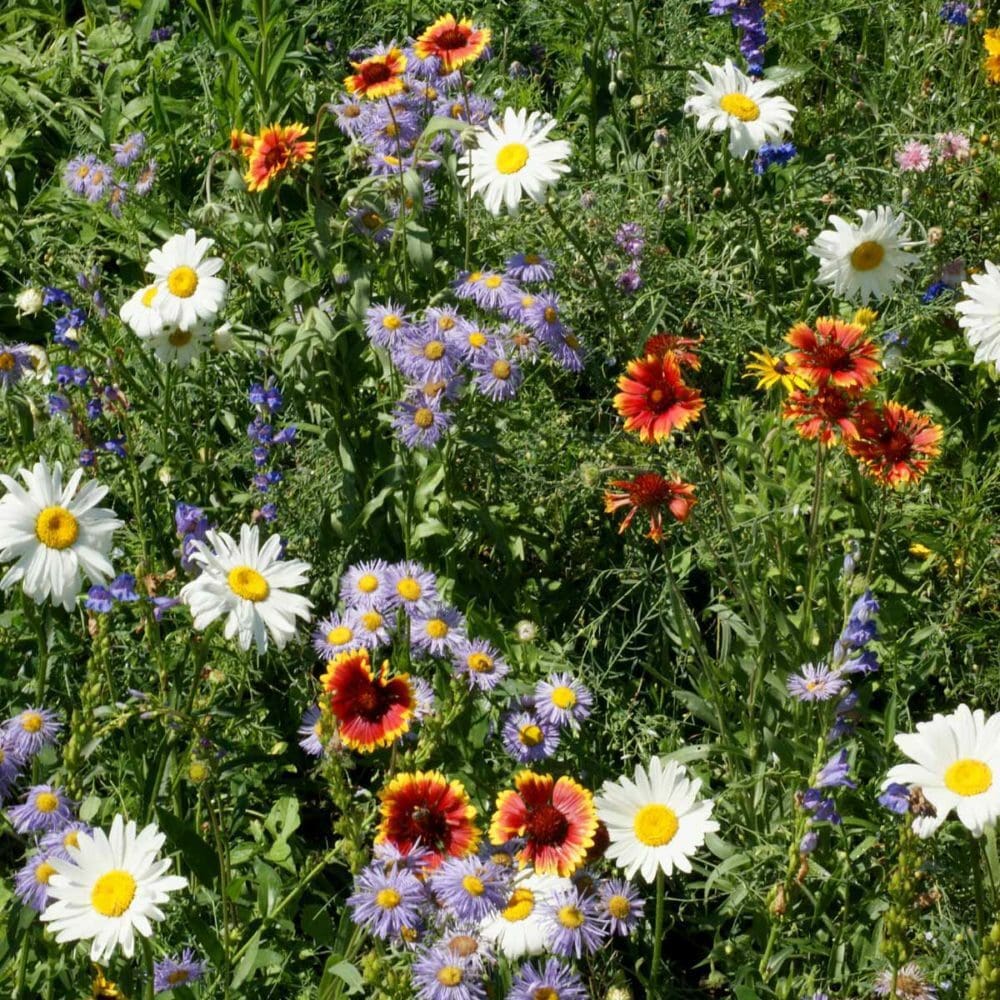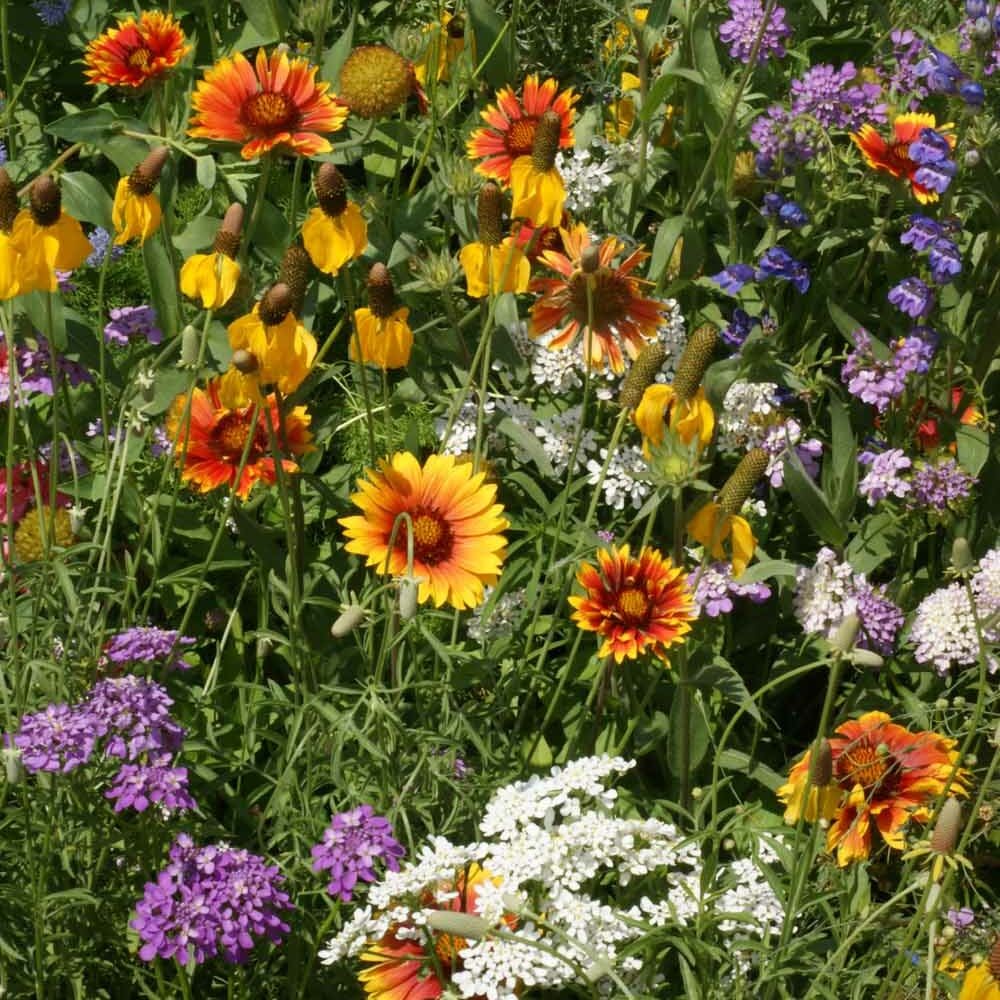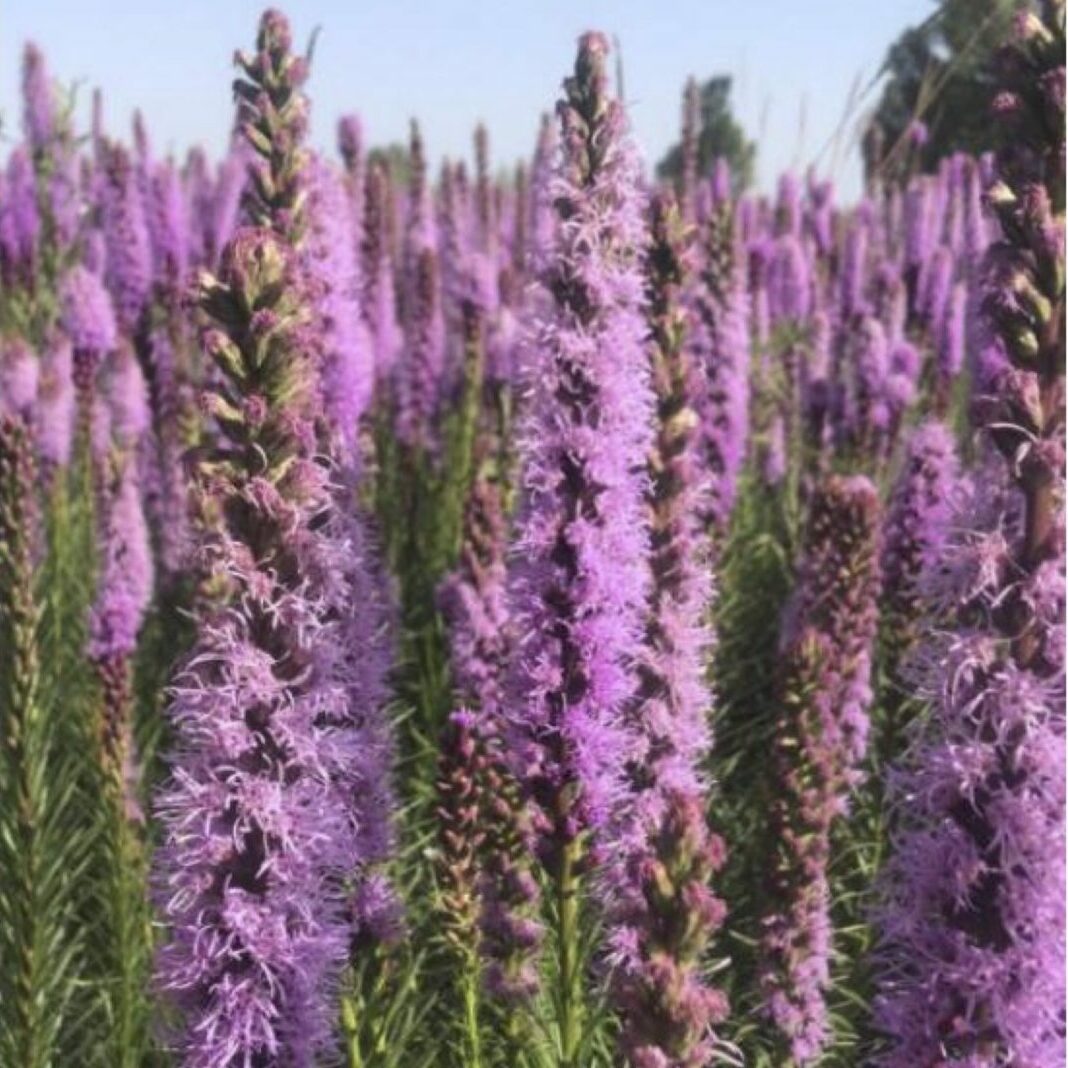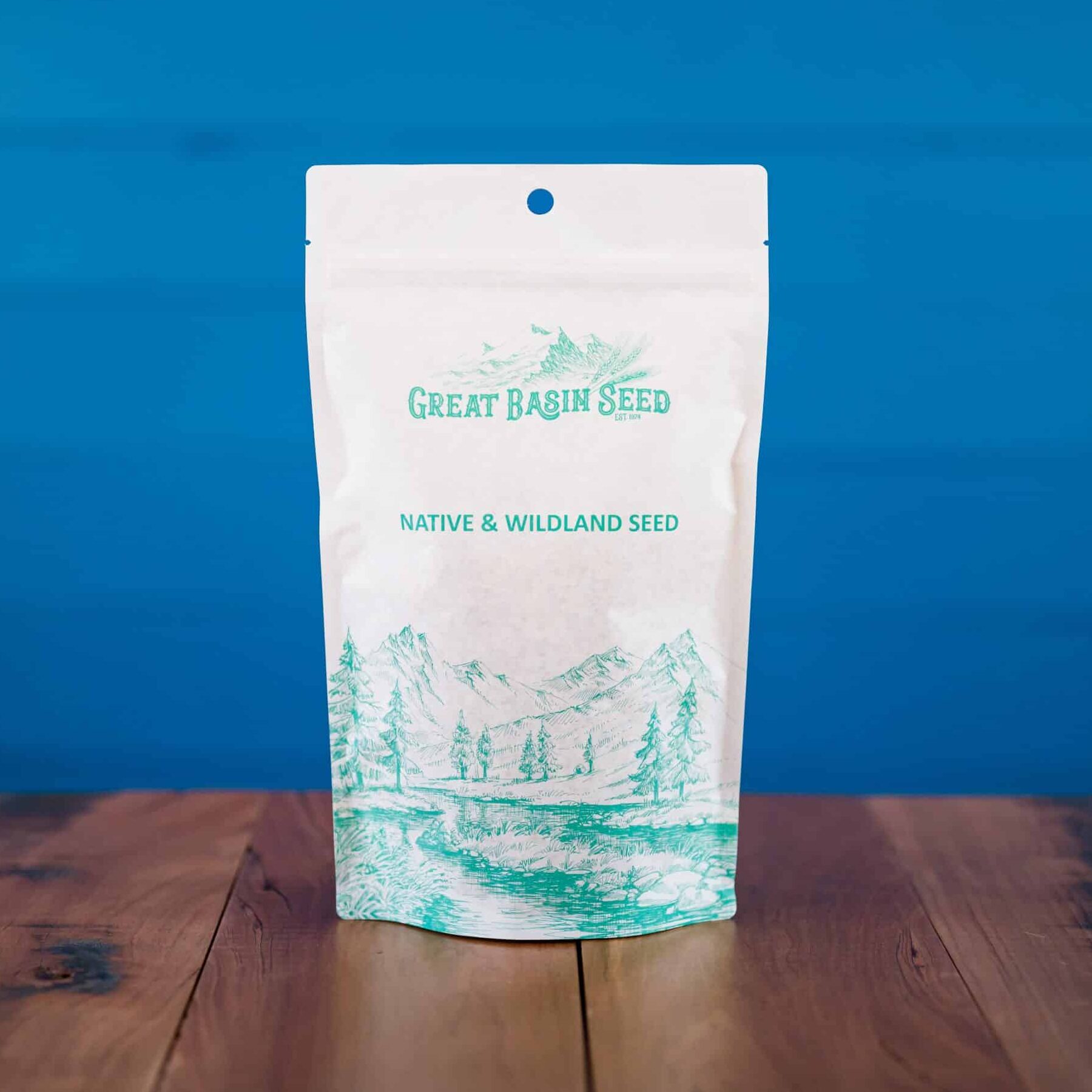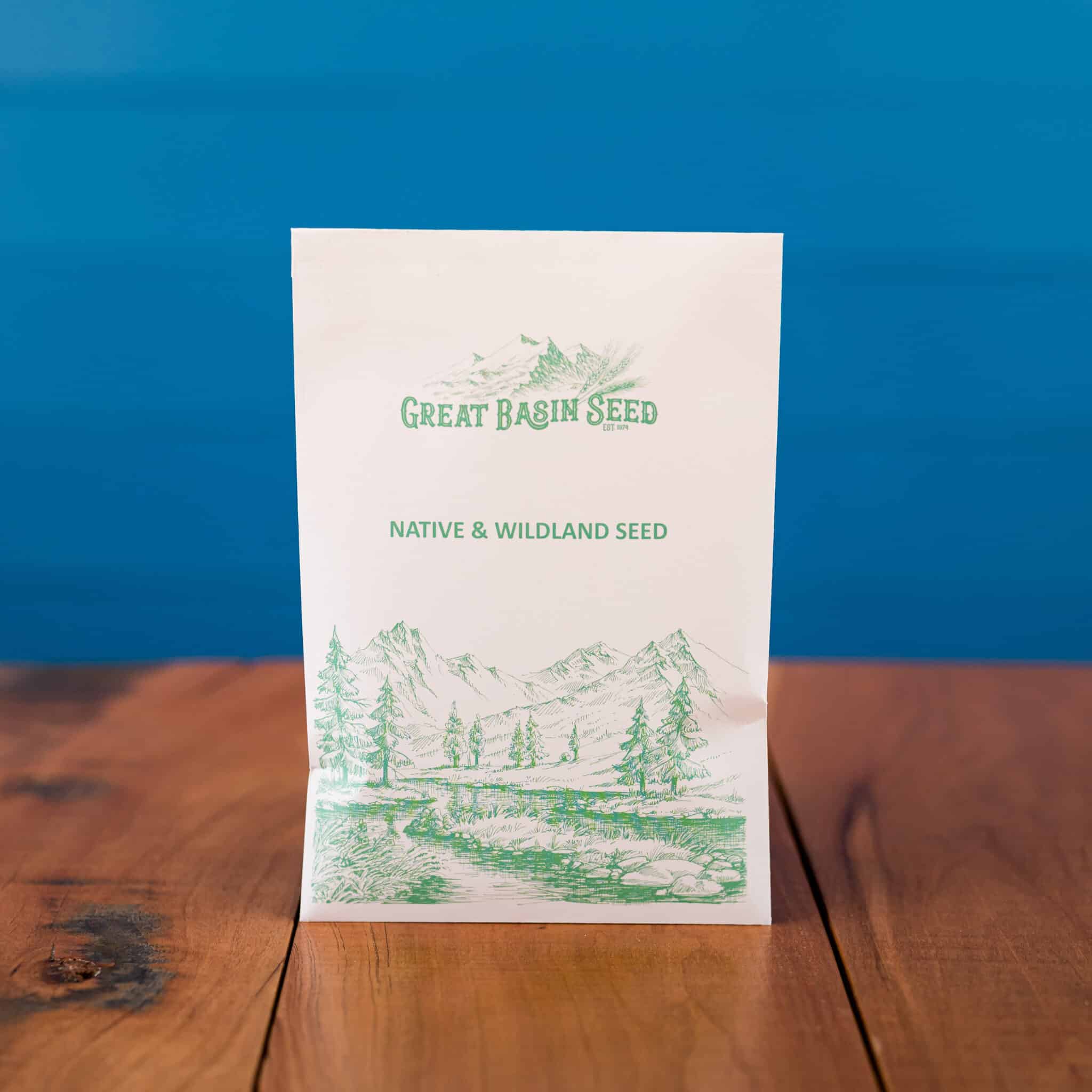Honey Bee Flower Mix
 $8.95 – $25.75
$8.95 – $25.75 - Annual and perennial wildflowers
- Excellent for Honey Bees!
- 325,000 seeds per pound
- Covers up to 8,000 square feet
- Available in 1 lb. cotton bags or 3 oz pouch
- Coated with Pinnacle for better germination
General Description:
Honey Bee Flower Mix is a mixture of annual and perennial flowers that provide nectar and pollen to honey bees. These flowers are proven favorites of honey bees in our gardens and will provide bee forage spring through fall. Honey Bee Flower Mix is ideal for honey beekeepers or anyone interested in honey bee health.
This mix can be used in garden beds, borders, planter boxes and other maintained areas. It can also be spread in larger areas for a naturalized look. Plant heights vary from 6″ to 48″. This mix is widely adapted most areas of the United State and southern Canada. For south Texas and the Florida Panhandle see our Texas and Oklahoma or Southeast Wildflower Mix.
The annuals in the mix are prolific seed producers and will re-seed themselves year after year. The perennials bloom all summer long and will return from the root stock. The success of returning plants will depend on a number of environmental factors and how you care for your stand.
Recommended Seed Rates:
Our wildflower seeds will cover up to approximately 6,000 square feet per lb. However, while we offer recommended seeding rates, your “coverage” is a function of your desired plant density. For example, you may want heavy plant density in a sidewalk flowerbed, but opt for low plant density in a large-scale or naturalized area. As a general rule, you can adjust the seeding rate to be as heavy as one pound per 2,000 sq. ft. or as light as one lb. per 6,000 sq. ft. In large “naturalized” areas a seeding rate of 1 pound per 6,000 square feet will usually produce plant density thin enough you can walk through it without becoming tangled. Customers who plant smaller manicured flower beds or planter boxes usually desire higher plant density and use a higher seeding rate.
1 lb. Cotton Bag: from 2,000 – 6,000 sq. ft.
3 oz Pouch: from 200 – 500 sq. ft.
Seed Coating:
Our wildflower seed mixes are coated with Pinnacle seed coating from Summit Seed Coating. Pinnacle is a highly respected product in the seed industry and is proven to increase germination and establishment rates by up to 50%. In our trial plots coated seed outperformed raw seed by a landslide, resulting in faster establishment, higher plant density and healthier plants. And, you save money! Because germination rates are increased you can plant fewer pounds of seed per square foot.
Pinnacle seed coating is applied in a multitude of colors, so don’t be alarmed when your seed arrives and it is pink, green or yellow! Each regional mix is coated in a unique color. It is natural for a small amount of the seed coating to “sluff off” during transport, so you may find a small amount has settled in the bottom of the packaging. The coating is not harmful.
Great Basin Seed flower mixes are packaged in our durable, attractive cotton old fashioned flower seed bags. Detailed site preparation and sowing instructions are included with the packaging.
Download Spec Sheet
Download this spec sheet for Honey Bee Wildflower Mix
COATED WILDFLOWER SEEDS IN ACTION
Watch Noah explain the benefits of seed coating and the dramatic improvements our wildflower mixes!
Tip #1 : Gentle Water
To prevent seeds from being dislodged or washed out, begin establishment by watering with a rain can or some other form of gentle application. Avoid watering directly with a garden hose. For large areas, gentle sprinkler application is acceptable.
Tip #2 : Maintain soil integrity
Continue gentle water application after plant emergence. Tender seedlings are susceptible to soil disturbance, and roots can be easily broken-off or dislodged.
Tip #3 : Attentive water schedule
Water once a day for at least four weeks. Wet or humid climates may require less. Arid climates may require twice daily. Once establishment has begun and plants are 3-4 inches tall, slowly transition from high-frequency low-duration watering to low-frequency high-duration watering.
Benefits of Coated Wildflower Seeds
Great Basin Seed wildflower mixes are coated for a number of sowing and establishment enhancements:
Seeds Wont Blow Away
Nature has designed many wildflower seeds to cary on the wind. Coated seed stays where you put it.
You Can See Where You've Sown
Wildflower seeds are earth-tones and raw seed is difficult to see. Bright colored coated seed means you can see where seed is sown.
Deters Birds and Rodents
Seed coating makes seed unrecognizable to rodents and birds and coating deters them from eating it.
Improved Seed Distribution
Brightly colored coated seeds aids in even seed distribution, and even allows you to sow heavy in some spots, lighter in others.
Germination & Establishment
Coating holds water and protects tender seedlings during germination, enhancing establishment and stand density.
Reduced Seeding Rate & Savings!
Increased germination rates mean fewer seed can be sown. Higher plant density is achieved with coated seed.
Benefits of seed coating are well documented, and it saves you $$$
Seed coatings offer a number of significant benefits over raw seed. These benefits are evident in the application of seed (sowing) and in the development of the seed once it is planted. Other sectors of the seed industry have been applying coating to seeds for decades with great results. The benefits are well documented.
Beat the Wind: Mother nature has created brilliant and intriguing methods of disbursing seed. Many wildflowers have plumes or hairs that catch wind and spread them, sometimes miles away. This is a great attribute for the survival of a species. It’s not so great if you want your flower seeds to stay in place! Seed coating flattens the plumes and hairs and helps seed stay in place. Additionally, the coating makes the seed heavier so it resists movement and “sets” more firmly in the soil surface. These characteristics all enhance germination and result in more plants per square foot – and healthier plants, too!
See where you’ve sown: Raw (raw = not coated) wildflower seeds are earth tone colors. Some wildflower seeds are the same size as a grain of sand, making them even more difficult to see. When they are spread on the ground they are nearly invisible. A consequence of that is that wildflower mixes are frequently either over-seeded (too much seed) or under-seeded (not enough seed) or are sown in mosaics and patches. Our wildflower mixes are coated with bright colors that contrast with the ground so you can see exactly where you’ve spread seed and can adjust density to your liking. The result is an even stand of wildflowers, and you don’t waste seed!
Deter Birds and Rodents: Seeds are the primary food source for most birds and rodents. They can carry away a considerable percentage of your seeds, leaving you a thinned-out, weak stand of flowers. Coating can deter birds and rodents from eating your seeds in two ways; the seed is camouflaged under the seed coating and it no longer looks like a seed, and it resembles a dirt clod.
Better Germination and Establishment: Seed coating improves the viability, vigor and longevity of seedlings and plants. Because coating sets the seed firmly in the soil, roots achieve faster and more stable contact with the earth. This allows the plants to rapidly draw nutrients from outside the seed. Coating absorbs and holds moisture, reducing the chance they dry out during emergence. When plants start strong, they stay strong, and the longevity and quality of your flowers are improved once the plants are grown.
SAVE MONEY!: Sometimes less is more, and when you coat seed less is definitely more. Because of the attributes mentioned above you get higher stand density (more plants per square feet) with less seed because more seeds germinate and emerge into healthy plants. With coated alfalfa, for example, most farmers achieve the same stand density with 10-12 pounds of coated seed that they achieve with 18-20 pounds of raw seed. In our trials, we achieved 50% more stand density with coated wildflower seeds than with raw seed. This means that you can cover the same area with half as much seed, saving you considerable money!
SOW LESS SEED PER SQUARE FOOT
ACHEIVE HIGHER STAND DENSITY
SAVE MONEY, GET BETTER RESULTS
less seed, better results
STRONGER SEEDBETTER RESULTS
Coating has proven to enhance the survivability, vigor and persistence of seed. This means you can sow LESS seed per square foot and get BETTER results.
SURVIVABILITY
Many seeds die in the initial phases of the germination process as a result of poor ground contact, insufficient water, wind and exposure. Coating anchors the seed to the ground and holds water, resulting in more successful plants.
SEEDLING VIGOR
Vigor is how strong a seedling is once it sprouts. Coating encapsulates the seed and fosters an environment where seeds can quickly begin pull nutrients from the ground, improving vigor and longevity.
PERSISTANCE
Persistance is the survival of seeds once they have established. Plants that start strong stay strong, resulting in healthy, dense stands of wildflowers.
the right seed density
DETERMINE YOURSEEDING RATE
Your seeding rate will be determined by your goals and the planting site, but we can give you a few pointers…
BASE SEEDING RATE
The base rate for wildflower mixes is 1 pound per every 8,000 square feet. Increase the seeding rate for higher stand density.
NATURALIZED, OPEN AREAS
Naturalized and open areas are usually larger areas of a yard or planting site where lower plant density is desired. Foot and pet traffic will often go through these areas and plant density is low enough that the flowers are not trampled and feet are not tangled. Plant density may be as low as a few plants per square foot. These areas are usually not manicured and flowers are desired as much for ground cover and weed competition as for beauty and aesthetics. A planting rate of 1 pound per 8,000 square feet is sufficient in these areas. Increase your planting rate to your desired aesthetic.
FLOWER BEDS, PLANTER BOXES
Heavier plant density is generally desired in manicured flower beds and planter boxes. Foot traffic usually goes around these kinds of planting sites, not through them. These are usually areas that are smaller than 2,000 square feet. Plant density will be very high with many plants per square foot. The planting rate shown in the photos at left approximates a seeding rate of 1 pound per 2,000 square feet.
Wildflower Mixes for Every Region
Regional wildflower mixes selected for your climate and growing conditions.
Who is Great Basin Seed?
Great Basin Seed is a seed company that specializes in seed sales and consultation for home, ranch, farm, range and reclamation. We have been a leader in the seed industry since 1974.
Our History
We've been in the seed business since 1974.
What We Offer
We offer seed for home, farm, ranch, range and reclamation projects.
Meet the Gang
We have the best employees in the world! We are proud of the work they do, and trust them to serve you!
Right: Company founder Lloyd and his wife Paula Stevens in a wildflower seed production field circa 1977
| Image | Common Name | Scientific Name | Flower Colors | Type | Height (inches) |
|---|---|---|---|---|---|
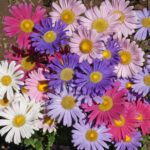 | China Aster, Single Mix | Callistephus chinensis, Single Mix | Pink/Purple/White | Annual | 12" - 36' |
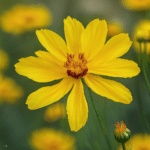 | Lance Leaved Coreopsis | Coreopsis lanceolata | Yellow | Perennial | 12" - 24" |
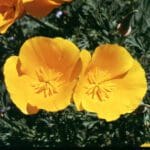 | California Poppy | Eschscholzia californica | Orange | Annual | 6" - 12" |
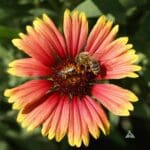 | Blanketflower | Gaillardia aristata | Red/Yellow | Perennial | 12" - 24" |
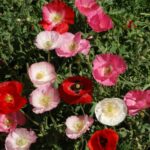 | Corn Poppy 'Shirley Single Mix' | Papaver rhoeas | Pink/Red/White | Annual | 24" - 36" |
 | Chinese Forget-Me-Not | Cynoglossum amabile | Blue/Pink | Annual | 12" - 24" |
 | Siberian Wallflower | Cheiranthus allionii | Orange | Perennial | 10"- 18" |
 | Sweet Mignonette | Reseda odorata | Green-White | Annual | 12" - 24" |
 | Sulphur Cosmos, Dwarf Mixed | Cosmos sulphureus, Dwarf Mixed | Yellow/Orange | Annual | 12" - 24" |
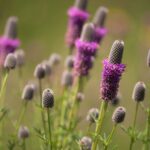 | Purple Prairie Clover | Dalea purpurea | Purple | Perennial | 12" - 36" |
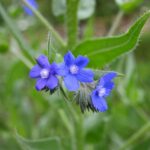 | Cape Forget-Me-Not | Anchusa capensis | Blue | Perennial | 12" - 18" |
 | Sweet 'Genovese' Basil | Ocimum basilicum 'Genovese' | Green | Annual | 18" - 24" |
 | Purple Coneflower | Echinacea purpurea | Pink | Perennial | 24"- 48" |
 | Scarlet Cinquefoil | Potentilla thurberi | Red | Perennial | 12" - 24" |
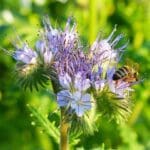 | Lacy Phacelia | Phacelia tanacetifolia | Purple | Annual | 12" - 48" |
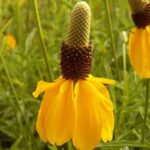 | Prairie Coneflower | Ratibida columnifera | Yellow | Perennial | 12" - 36" |
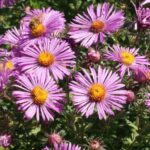 | New England Aster | Symphyotrichum novae-angliae | Purple/Pink | Perennial | 36" - 72" |
 | Purple Giant Hyssop | Agastache rugosa | Purple | Annual | 24" - 36" |
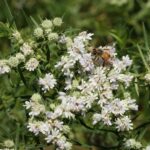 | Slender Mountain Mint | Pycnanthemum tenuifolium | Green-white | Perennial | 24" - 36" |
| **The mix contents are subject to change |
Establishment:
When you plant can vary based on your climate, rainfall patterns and the species you are planting. Generally speaking, However, annuals and perennials or annual/perennial mixes perform best when planted in spring, early summer or late fall. If fall planting is your method, plant late enough in the fall that your seeds remain dormant and do not germinate until spring. Perennials can be planted in early fall if there are at least 10-12 weeks of growing time before the plants go into winter dormancy. In mild climates plant during cooler months for best results.
Site Preparation:
For best results plant on cleared ground. Remove all weeds, grasses and existing vegetation before planting. Loosen compacted soil by scraping, tilling or scarifying. Tilling should be utilized only when soil is very compact. If soil is tilled, take care not to plant seeds deeper than 1/4 inch.
Planting Rate:
Wildflowers are generally plated at a rate of four to five pounds per acre, although it is not unusually to recommend or plant six to eight pounds per acre. A planting rate in the minimum range is usually sufficient to establish a good stand of wildflowers on prepared soil with adequate maintenance. The maximum rate is recommended when ideal soil preparation and weed control are not possible, or when a maximum display is required. Poor perennial establishment may result if the maximum seeding rate is exceeded, as the plants will compete with each other for real estate, water and sunlight.
Watering:
The watering cycle for establishing wildflowers is similar to establishing a new lawn. Keep the soil wet during the establishment process. Success is most likely to be achieved if you begin by watering in a high frequency – low duration pattern. This generally means watering at least once a day if seeds are sown early spring. Two waterings per day may be necessary in late spring and early summer plantings, or in arid climates. At approximately 4-5 weeks you can reduce the frequency of watering. Be mindful of your wildflowers during the hottest and most intense sun days and supplement with additional water when necessary. Early morning watering is best.


